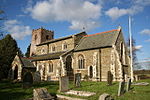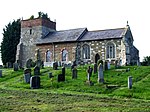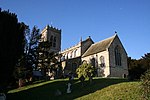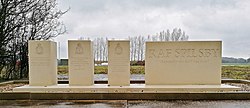Burgh-le-Marsh railway station
Beeching closures in EnglandDisused railway stations in LincolnshireFormer Great Northern Railway stationsPages with no open date in Infobox stationRailway stations in Great Britain closed in 1970 ... and 2 more
Railway stations in Great Britain opened in 1848Use British English from August 2015

Burgh-le-Marsh was a railway station on the East Lincolnshire Railway which served the town of Burgh le Marsh in Lincolnshire between 1848 and 1970. It originally opened as Burgh, but was renamed in 1923. Withdrawal of goods facilities took place in 1966, followed by passenger services in 1970. The line through the station is now closed.
Excerpt from the Wikipedia article Burgh-le-Marsh railway station (License: CC BY-SA 3.0, Authors, Images).Burgh-le-Marsh railway station
Station Road, East Lindsey Burgh le Marsh
Geographical coordinates (GPS) Address External links Nearby Places Show on map
Geographical coordinates (GPS)
| Latitude | Longitude |
|---|---|
| N 53.17594 ° | E 0.20842 ° |
Address
Burgh-le-Marsh
Station Road
PE24 5ES East Lindsey, Burgh le Marsh
England, United Kingdom
Open on Google Maps











